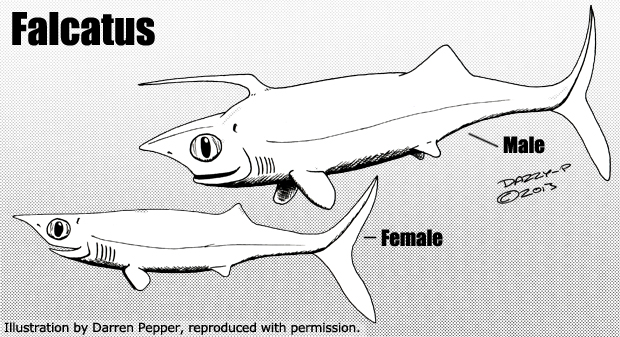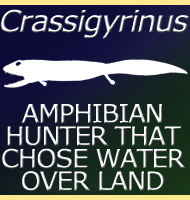


Falcatus

Name: Falcatus
Phonetic: Fal-cat-us.
Named By: R. Lund - 1985.
Classification: Chordata, Chondrichthyes,
Elasmobranchii, Symmoriida.
Species: F. falcatus (type),
F. hamatus, F.
proclivus.
Diet: Carnivore/piscivore.
Size: 25 to 30 centimetres long.
Known locations: USA.
Time period: Serpukhovian of the Carboniferous.
Fossil representation: Many specimens known.
Falcatus
was a tiny shark
that has managed to stand out from others because of
the presence of a dorsal spine that rises up from where you might
expect the first dorsal fin to have been. However instead if rising
backwards like in other primitive sharks such as Orthacanthus
and
Xenacanthus,
the dorsal spine of Falcatus bends forwards over
its head.
The purpose of this curious spine is almost certainly for the purpose
of display as it only appears upon the male specimens of Falcatus.
Falcatus
has very large eyes for its small size that are probably an adaptation
for deep water hunting where less light is available. Also despite the
loss of the first dorsal fin that would normally sit above the
pectorals, the caudal (tail) fin is strongly developed with both the
upper and lower lobes being similar in size to one another. This
suggests that Falcatus was an active swimmer that
was capable of giving
chase after prey, probably smaller fish but possibly also soft bodied
invertebrates.
Further reading
- The morphology of Falcatus falcatus (St. John and
Worthen), a
Mississippian stethacanthid chondrichthyan from the Bear Gulch
Limestone of Montana. Journal of Vertebrate Paleontology 5(1):1-19, R.
Lund - 1985.
----------------------------------------------------------------------------
More sharks!
 |
 |
 |
 |




